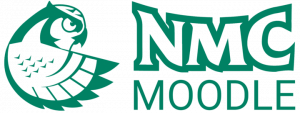Glossaries
Sources/Articles:
Glossary 1:
The Ongoing Problem of Race in Y.A.,
The Holocaust’s Uneasy Relationship with Literature,
Glossary 2:
YA Books Explore the Immigrant Experience
Seeing
Teenagers As We Wish They Were: The Debate Over YA Fiction,
Glossary 3:
Don’t Drink the Water: Colonialism and Pete Hautman’s Godless,
Carte Blanche: The Last Taboo?,
Glossary 4:
The Sand in the Oyster,
YA Meets the Real: Fiction and Nonfiction That Take On the World
* You will also be referring back to our course books in connection with the above articles: Monster, The Boy on the Wooden Box, American Street, The Fault in Our Stars, Godless, Shizuko's Daughter, The Absolutely True Diary of a Part-time Indian, and Where the Streets Had a Name.
Due Date: On Saturdays in each section as assigned. See schedule for due dates and weekly blocks.
Length: 4 entries responding to assigned critical reading
Value: 100 points (50 points each)
Assignment Description:
In short: Read the two articles, think about our lit books and the points the articles raise, and create a multimodal piece/presentation responding to/ reacting to/ and reviewing it.
Some more specifics:
PUT YOUR NAME IN THE TITLE/CATEGORY OF YOUR GLOSSARY ENTRY. OTHERWISE I WILL NOT KNOW WHO DID WHAT.
Our semester long Glossaries are about making connections between our critical readings and the books we read for this course. Your task is to add and reflect on the important discussions that emerge in these readings about themes, topics, controversies, and general reflections about the culture of Young Adult literature today.
For this project, you will be developing 4 glossary entries over the course of the semester, each entry responding in some form to select critical articles that we have read. (Each entry will tackle a couple articles. You will draw connections between articles and a particular book/s that we have read. Your slide/entry may take the shape of an audio file, a video you have made, a collection of images with your own reflections/text overlaid, ..anything that you feel takes some concept, point, or quote from the article and expands on that thinking with your own form of visual and textual analysis. In these slides I would like to see you over the course of the semester experiment with different mediums and ways of reflecting your interpretations and analysis of our critical readings. Your glossaries will include visual elements and/or audio. And of course your work at large will demonstrate your knowledge of important concepts and concerns in YA lit.
During the first weeks, I will add my own slide(s) (or a student sample) to give you a possible model to see what these entries might look like. Our weekly glossary will be displayed on the left-hand side of the class and will focus on a new entry each time you visit the course. They are public just like our forum posts.
Remember that each section's weekly glossary will close on Saturday by midnight same as our forums.
As you craft your glossary entries remember our course learning outcomes:
- Demonstrate an awareness of how culture affects adolescents
- Demonstrate their awareness of universal issues affecting young people
- Communicate with an understanding of audience and purpose
- Interpret and evaluate literary works through textual explication and analysis
- Support critical claims with specific textual evidence and careful, well articulated reasoning
- Discover and illuminate matters of ethnicity and gender and the cultural and historical contexts from which the texts emerged
One of our primary goals in ENG 271 is to explore how adolescent literature reflects cultural diversity and each culture's connection to the social, political, philosophical and economic structures of society.
Audience: The intended audience for your project should be educators or college students interested in adolescent literature. In other words, you should create for readers who may not be completely familiar with the books or critical articles, but may have some general YA knowledge or interest.
Grading: I will grade your slides each week after they have been posted the same way that I rate forums.
Glossary Checklist:
In your glossary entry is there:
☐ Clear evidence of interaction with main points or concepts from the critical article with or without the use of quotes (but not just quotes standing alone)
☐ Visual or audio elements that add interest to the entry and mirror the content/topic
☐ Commentary showing reflection from the student on how glossary elements work together (if not self-explanatory)
☐ Connections or bridged links between the critical articles and our YA book(s)
